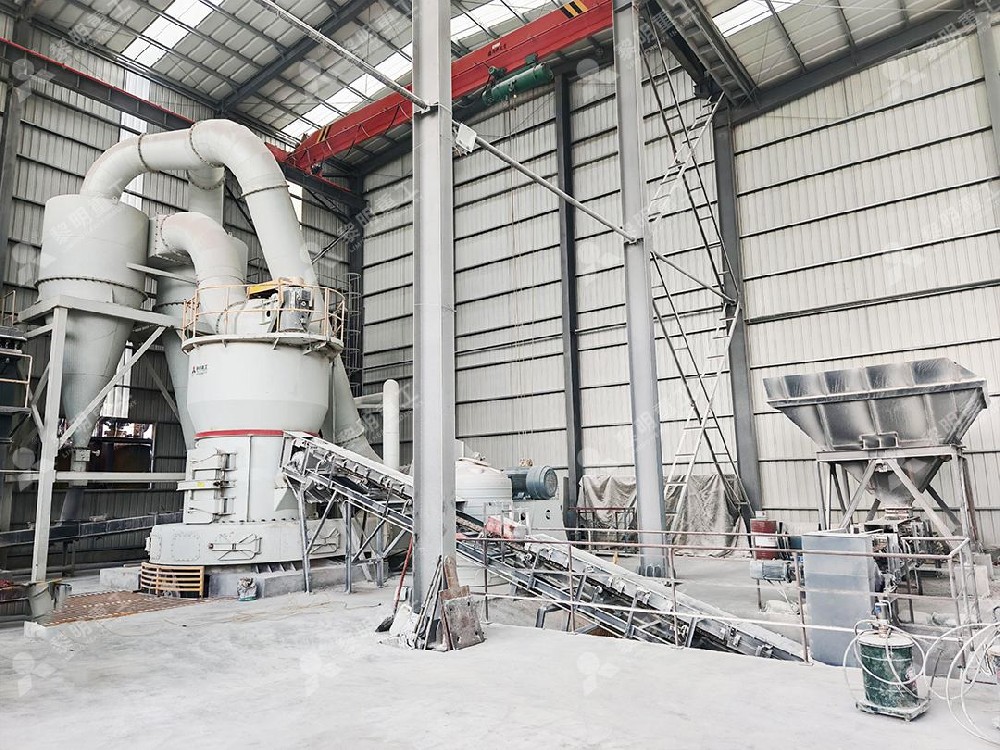Industry News
Cost Analysis of a 20TPH Calcium Carbonate Grinding Plant
2025-11-19 09:49:16
We are Liming Heavy Industry, a manufacturer of various types of industrial crushers, such as Raymond Mill, Trapezoidal Mill, Vertical Mill, Ultrafine Mill, Ball Mill, etc.
Our mills can process the following minerals:
limestone, quicklime, kaolin, talc, barite, bentonite, calcium carbonate, dolomite, coal, gypsum, clay, carbon black, slag, cement raw materials, cement clinker, etc.
If you need a mill to process stone or minerals into powder, please feel free to contact me (WhatsApp: +86 153 3380 7511). Thank you.
A 20TPH calcium carbonate grinding plant is a common configuration in industries such as paper, plastics, coatings, construction materials, and chemicals. With stable market demand in these sectors, many manufacturers choose the 20-ton-per-hour capacity because it offers an ideal balance between production scale, energy consumption, and initial investment. A detailed cost analysis helps investors understand the financial structure of such a plant and make informed decisions on equipment selection, plant layout, and operational budgeting.
_1761355701094.jpg)
1. Equipment Investment
The core cost of a 20TPH grinding plant lies in the selection of the main mill. Calcium carbonate typically requires grinding to 200–800 mesh, depending on its downstream application. Choosing the right mill not only determines output and operational stability but also influences long-term operating expenses.
Raymond mills are a popular choice for 200–325 mesh production. They feature simple structure, low investment, and stable operation, making them suitable for factories wanting reliable performance without excessive capital expenditure. For higher fineness requirements and improved energy efficiency, vertical mills offer an integrated system of grinding, classifying, and drying. Their larger capacity and lower power consumption per ton make them a preferred option for modern, energy-conscious plants.
In addition to the main mill, auxiliary equipment includes crushers, bucket elevators, feeders, classifiers, dust collectors, and packing machines. Together, these components account for a significant portion of the total investment. A complete system designed with good compatibility ensures smooth production and reduced maintenance costs.

2. Infrastructure and Installation Costs
Building a 20TPH calcium carbonate grinding plant requires proper planning of workshop layout, steel structure, foundations, electrical systems, ventilation, and environmental protection facilities. The land and construction budget varies widely depending on the local area, but plant owners must allocate funds for:
Workshop construction
Storage area for raw materials and finished products
Electrical control room
Dust and noise management systems
Equipment pedestals and pipelines
Installation costs also cover mill assembly, electrical wiring, system testing, and commissioning. Selecting equipment from manufacturers with complete installation guidance and after-sales support helps reduce delays and unexpected expenses.

3. Operational Costs
Operational expenses primarily include electricity, labor, maintenance, and consumables. Power consumption is one of the largest ongoing costs in a grinding plant. A 20TPH system may require several hundred kilowatts depending on the type of mill. Vertical mills generally offer lower power consumption because of their high grinding efficiency and internal classification structure. Raymond mills consume slightly more electricity per ton but compensate with lower equipment costs.
Labor costs include operators, maintenance workers, and quality control staff. Modern mills with automated controls reduce manpower requirements, lowering long-term payroll expenses. Consumables such as grinding rollers, rings, liners, and filter bags must be replaced periodically. High-quality mills use wear-resistant materials, extending service life and lowering yearly maintenance expenses.
4. Environmental Compliance and Dust Control
Calcium carbonate plants must adhere to dust emission standards. Dust collectors, mufflers, and sealed conveying systems form part of the environmental protection costs. Plants with poor dust control not only face fines but also suffer from reduced equipment lifespan and lower product purity.
Vertical mills offer a fully sealed system with negative pressure operation, which helps maintain clean workshop conditions. Raymond mills also function under negative pressure but may require more frequent dust control maintenance depending on plant layout. Proper environmental design ensures smooth certification processes and safeguards long-term production stability.

5. Return on Investment
A 20TPH calcium carbonate grinding plant typically reaches stable production quickly if the equipment is well-selected and the layout is optimized. Return on investment depends on product selling price, market demand, and operating efficiency. Higher fineness powders such as 600–800 mesh often command better market value but require mills capable of finer grinding.
For investors seeking reliable long-term operation with manageable cost, Raymond mills are suitable for standard product lines, while vertical mills are ideal for larger, energy-efficient, and higher-value production. Choosing equipment with stable performance helps minimize operational risks and maximize profit margins.
Recommended Equipment for 20TPH Calcium Carbonate Plants
Liming Heavy Industry provides grinding mills widely used in calcium carbonate production worldwide. Its Raymond mill is suitable for stable 200–325 mesh output, while the vertical mill offers higher capacity, better energy efficiency, and finer powder quality. These mills are designed for long-lasting industrial operation, helping plant owners reduce downtime and improve overall cost efficiency.
_1761355701097.jpg)
FAQ
1. What fineness is typically required for calcium carbonate?
Most applications require 200–800 mesh, depending on the industry and product type.
2. Which mill is more energy-efficient for a 20TPH plant?
Vertical mills generally consume less electricity per ton due to their efficient grinding and classification system.
3. How many workers are needed for a 20TPH grinding line?
A modern automated plant may require 3–6 workers per shift, depending on automation level.
4. What type of mill is best for producing 325 mesh calcium carbonate?
Raymond mills are widely used for stable, cost-effective 325 mesh production.
5. Does a vertical mill require more maintenance?
Vertical mills have higher initial technical requirements but typically lower long-term maintenance due to durable grinding parts.
6. What environmental equipment is needed?
Dust collectors, negative-pressure systems, mufflers, and sealed conveyors are commonly used in calcium carbonate plants.
7. What is the key factor affecting total plant investment?
Mill selection plays the largest role, as it determines overall capacity, energy consumption, and maintenance cost.







